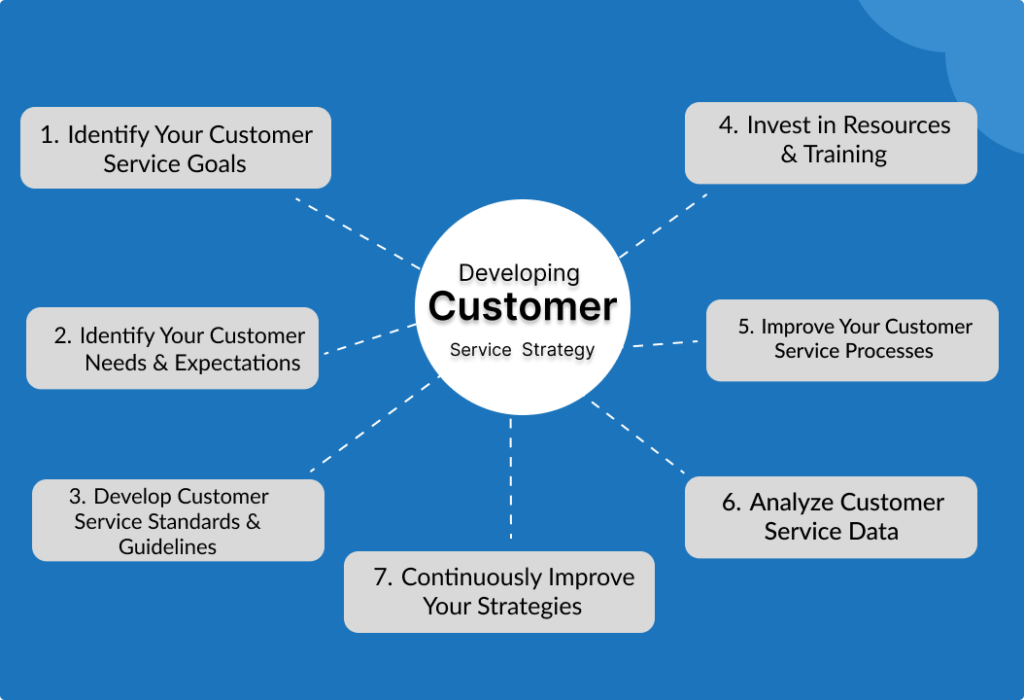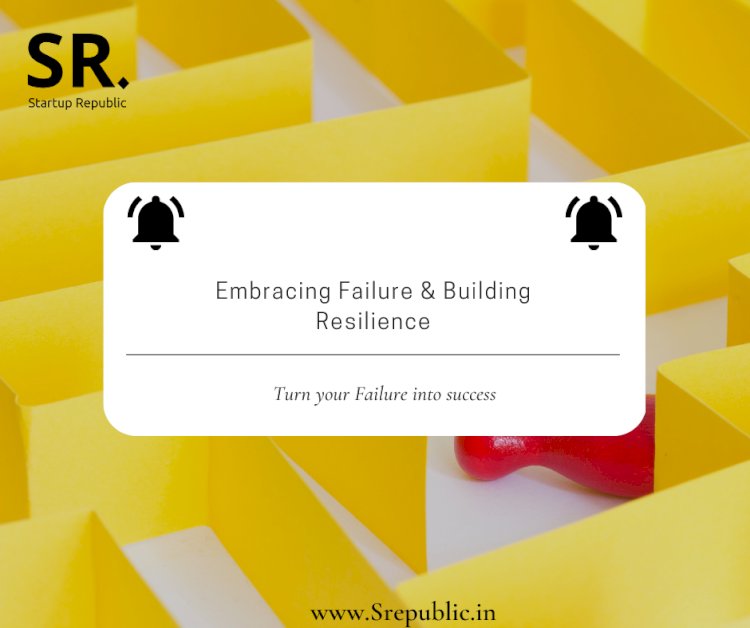
Your Startup’s Secret Weapon: Unlocking Growth with Stellar Customer Service Strategies
In the thrilling, often chaotic world of early-stage startups, it’s easy to get caught up in product development, fundraising, and market validation. But amidst the whirlwind, one crucial element often gets overlooked or relegated to an afterthought: customer service.
Think of customer service not as a cost center, but as a powerful growth engine. For a new business, it’s your direct line to understanding your users, building unshakeable loyalty, and turning early adopters into passionate advocates. This comprehensive guide will equip you with the essential customer service strategies specifically tailored for early-stage startups, helping you build a foundation for lasting success.
Why Customer Service is a Game-Changer for Early-Stage Startups
Before we dive into the "how," let’s understand the "why." For a startup with limited resources and no established brand, exceptional customer service isn’t just nice-to-have – it’s a necessity.
- Builds Trust & Credibility: In a crowded market, trust is paramount. Quick, helpful, and empathetic responses show customers you care, fostering a sense of reliability.
- Gathers Invaluable Feedback: Your early customers are your most honest critics and valuable product managers. Every interaction is a chance to learn what works, what doesn’t, and what features they desperately need. This feedback loop is priceless.
- Drives Word-of-Mouth Marketing: Happy customers tell others. A great service experience can lead to organic referrals, which are far more powerful and cost-effective than paid advertising for a startup.
- Increases Customer Retention: It’s cheaper to keep an existing customer than to acquire a new one. Stellar service keeps users coming back, reducing churn and building a stable revenue base.
- Establishes Your Brand Identity: The way you treat your customers defines your brand’s personality. Do you want to be known as responsive, caring, and innovative? Or slow, impersonal, and frustrating?
- Provides a Competitive Advantage: Many startups focus solely on product. By excelling at service, you differentiate yourself, even if your product isn’t perfectly polished yet.
Core Principles of Startup Customer Service
Before implementing specific tactics, internalize these foundational principles:
- Empathy First: Understand the customer’s problem and feelings, not just their words. Put yourself in their shoes.
- Speed & Efficiency: Respond promptly. Even if you don’t have an immediate solution, acknowledge their query quickly.
- Personalization: Treat each customer as an individual, not a ticket number. Use their name, remember past interactions.
- Consistency: Deliver a reliable level of service across all channels and interactions.
- Transparency: Be honest about what you can and cannot do. If there’s a problem, communicate openly about it.
- Proactiveness: Anticipate potential issues and reach out before customers experience problems.
Essential Customer Service Strategies for Early-Stage Startups
Now, let’s get practical. Here are the actionable strategies you can implement right away:
1. Start with the Founder (You!)
In the early days, the founder(s) should be the primary customer service representatives. This isn’t just about saving money; it’s about gaining invaluable insights.
- Why it’s Crucial:
- Direct Feedback Loop: You’ll hear raw, unfiltered customer needs and pain points, directly influencing product development.
- Builds Deep Empathy: Understanding customer struggles firsthand cultivates a customer-centric mindset from the top down.
- Authenticity: Customers appreciate talking directly to the person building the product.
- How to Do It:
- Dedicate Time: Block out specific hours each day or week for customer interactions.
- Be Accessible: Make your contact information easy to find (email, a dedicated chat widget).
- Listen Actively: Don’t just solve problems; ask follow-up questions to understand the underlying need.
- Document Everything: Keep a simple log of common issues, feature requests, and customer sentiments.
2. Choose Your Channels Wisely (Don’t Overextend)
As an early-stage startup, your resources are limited. Don’t try to be everywhere at once. Focus on 1-2 channels where your target audience prefers to communicate.
- Common Channels & Considerations:
- Email: Universal, asynchronous (customers don’t expect instant replies), good for detailed queries. Essential for almost all startups.
- Live Chat: Provides real-time support on your website, great for quick questions and guiding users. Excellent for SaaS or e-commerce.
- Social Media: Customers might reach out on Twitter, Facebook, or Instagram. Be prepared to monitor and respond, even if it’s just directing them to email/chat. Important if your audience is highly active on social.
- Phone Support: Offers the most personal touch but is resource-intensive. Consider only if your product is complex or high-value, or if you serve an older demographic.
- Strategy:
- Identify Your Audience’s Preference: Where do they hang out and expect to get help?
- Start Simple: Begin with email, then add live chat as you grow and can manage it.
- Set Expectations: Clearly communicate your response times for each channel (e.g., "We respond to emails within 24 hours").
3. Embrace Self-Service: Empower Your Customers
Many common questions can be answered without direct human interaction. Building a robust self-service option saves you time and empowers customers to find solutions on their own.
- Key Elements:
- Frequently Asked Questions (FAQ) Page: A simple, well-organized list of common questions and their answers. Keep it updated.
- Knowledge Base/Help Center: A more comprehensive collection of articles, tutorials, and how-to guides. This can be a simple Google Doc or a dedicated tool.
- Onboarding Flows: Proactively guide new users through your product with in-app tutorials, tooltips, and welcome emails.
- Benefits:
- Reduces Support Volume: Frees up your time for more complex issues.
- 24/7 Availability: Customers can find answers anytime, anywhere.
- Improved User Experience: Many users prefer to find solutions themselves.
4. Personalize Every Interaction
In an era of automation, genuine human connection stands out. Even as you scale, strive for personalization.
- How to Personalize:
- Use Names: Always address customers by their first name.
- Reference Past Interactions: If you’ve communicated before, mention it ("Following up on our last chat…").
- Understand Context: If they’re asking about a specific feature, try to understand why they need it.
- Speak Their Language: Adjust your tone and vocabulary to match your customer base.
- Go the Extra Mile (When Possible): A personalized video, a helpful link, or a quick tip can make a huge difference.
5. Collect and Act on Feedback Relentlessly
Customer service isn’t just about solving problems; it’s about gathering insights to make your product and business better.
- Methods for Collecting Feedback:
- Direct Conversations: Ask open-ended questions during support interactions.
- Simple Surveys: After a support interaction, send a quick survey (e.g., "How would you rate your support experience?"). Tools like Google Forms or Typeform are great.
- In-App Feedback Widgets: Allow users to submit ideas or report bugs directly from your product.
- Social Media Monitoring: Pay attention to what people are saying about you online.
- Acting on Feedback:
- Categorize & Prioritize: Group similar feedback (e.g., "Feature Request: Export Data," "Bug: Login Issue").
- Share with the Team: Make sure product, engineering, and marketing teams see the feedback.
- Close the Loop: When you implement a suggestion or fix a bug based on feedback, tell the customer who reported it! This builds incredible loyalty.
6. Be Proactive, Not Just Reactive
Don’t wait for customers to come to you with problems. Anticipate their needs and reach out first.
- Examples of Proactive Support:
- Onboarding Emails: Welcome new users and guide them through initial steps.
- Product Updates: Announce new features, bug fixes, or planned maintenance before they go live.
- Educational Content: Create blog posts, videos, or webinars that answer common questions or teach users how to get more value from your product.
- "We Miss You" Campaigns: Reach out to inactive users to understand why they left or invite them back.
- Monitoring for Issues: Use tools to detect potential problems (e.g., slow loading times) and address them before customers notice.
7. Define Your Service Standards (Even if Informal)
Even if it’s just you, decide what "good" customer service looks like for your startup. This helps ensure consistency and sets a benchmark for future hires.
- Consider These:
- Response Times: How quickly will you respond to emails, chats, or social media messages? (e.g., "Email within 24 hours," "Chat within 5 minutes").
- Tone of Voice: Is your brand friendly, professional, quirky, empathetic?
- Problem Resolution: What steps will you take to ensure issues are fully resolved?
- Follow-Up: Will you follow up after a complex issue is resolved?
8. Leverage Simple Tools (Don’t Overcomplicate)
You don’t need expensive enterprise software. Start with tools that fit your budget and complexity.
- Essential Tools:
- Shared Inbox (e.g., Gmail with labels, or a basic helpdesk like Freshdesk, Zendesk for Startups, Intercom): Organizes incoming queries, allows for collaboration if you have a small team.
- Simple CRM (Customer Relationship Management) (e.g., HubSpot Free, Pipedrive): Helps you keep track of customer interactions, history, and preferences.
- Knowledge Base Software (often built into helpdesk tools, or simple Google Sites): To host your FAQs and help articles.
- Survey Tools (e.g., Google Forms, Typeform, SurveyMonkey): For collecting feedback.
9. Build a Customer-Centric Culture
Customer service isn’t just a department; it’s a mindset that permeates your entire organization.
- How to Foster It:
- Lead by Example: If founders prioritize customer interactions, the rest of the team will too.
- Share Customer Stories: Regularly share positive (and negative) customer experiences with the whole team.
- Cross-Functional Learning: Encourage product developers and marketers to occasionally sit in on support calls or read support tickets.
- Hire for Empathy: When you grow, look for candidates with strong communication skills and a genuine desire to help.
10. Plan for Scalability (Future-Proofing)
While you’re small, think about how your customer service will evolve as you grow.
- Key Considerations:
- Document Processes: Write down how you handle common issues, even if it’s just a simple checklist. This makes it easier to train new hires.
- Identify Automation Opportunities: Which repetitive tasks can eventually be automated (e.g., automated welcome emails, basic chatbots for FAQs)? Don’t over-automate too early, but keep it in mind.
- Consider Hiring: When will you need your first dedicated customer support person? What skills will they need?
Common Customer Service Mistakes Early-Stage Startups Make
Avoid these pitfalls to ensure your strategies pay off:
- Ignoring Feedback: Collecting feedback is useless if you don’t analyze it and act upon it.
- Being Inconsistent: A great experience one day and a terrible one the next erodes trust.
- Over-Automating Too Early: While automation is great for scale, early-stage startups need human connection to build rapport. Don’t replace personal touches with impersonal bots prematurely.
- Not Empowering the Team (Even Yourself): If you’re the one doing support, give yourself the authority to solve problems quickly without unnecessary roadblocks.
- Treating Support as an Afterthought: Believing that "if the product is good, people won’t need support" is a dangerous fallacy.
Conclusion
For early-stage startups, customer service is more than just answering questions; it’s about building relationships, gathering vital intelligence, and laying the groundwork for sustainable growth. By prioritizing empathy, personalization, and proactive engagement, you can transform your customer support into a powerful competitive advantage.
Invest in these strategies from day one, and you’ll not only solve problems but also create a legion of loyal customers who will champion your brand and fuel your journey to success. Your customers are your greatest asset – treat them like gold.



Post Comment